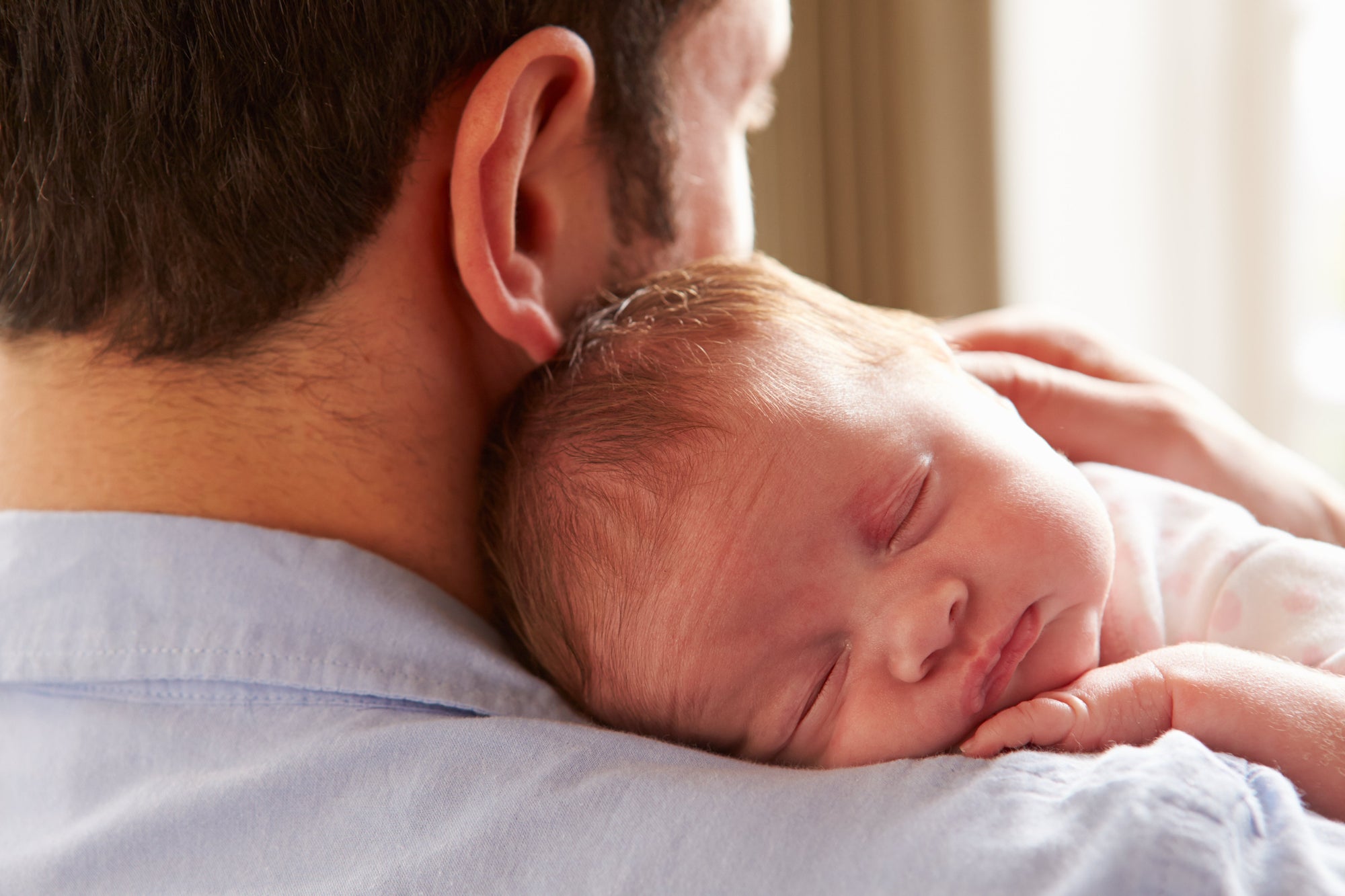By now you’ve probably heard all about sleep training. After all, it’s one of the most hotly debated sleep topics in the baby world (right up there with whose kid really looks the cutest in footed pajamas!).
With so many sleep training methods, techniques and tips out there, though, how can you make sense of everything? We decided to break it all down with some helpful advice from sleep consultant Traci Gleeson of Dream Team Baby, the experts behind the book The Dream Sleeper: A Three-Part Plan for Getting Your Baby to Love Sleep.
Let’s get started…what is sleep training?
According to Traci, sleep training is the process of teaching your baby how to sleep independently. You can do that in many ways by using an already established sleep training method or technique, or by coming up with your own.
“Independent sleep is a skill babies learn,” says Traci. “It’s an invaluable skill because babies are developing, and they need to get their sleep.”
Sleep training is closely tied to sleep associations, i.e. things your baby does in order to go to sleep. Positive sleep associations are actions babies take to fall asleep on their own, like humming or holding onto a lovey. Negative sleep associations are actions a parent or caregiver takes to help babies fall asleep, like rocking or feeding them. Sleep training addresses both types of associations.
“Sleep training is about having your baby learn the skill of independent sleep,” Traci says. “One of the main ways to do that is to get rid of negative sleep associations. Sleep training also allows your baby the time, space and opportunity to learn their own positive sleep associations.”
To sleep train, or not to sleep train: that is the question
There’s no rule that says you have to sleep train your baby. It’s a personal decision, one that depends on you, your baby and your pediatrician’s recommendations. But many experts do recommend sleep training as a way to start healthy sleep habits early on and address specific sleep issues, like constant middle-of-the-night wakeups.
When’s the best time to sleep train a baby?
The sweet spot for sleep training is around 4 to 6 months. That’s when many infants’ ability to self-soothe kicks in and they’re able to sleep through the night without needing to wake up to feed.
Of course, you can sleep train at any age. But Traci points out that it may be significantly harder to do so when your baby is older and more aware of changes to their normal sleep routine.
In fact, whenever you do decide to sleep train, your baby might initially respond to the change with one or more of the following:
- Increase in appetite
- Decrease in appetite
- Clinginess
- Crankiness
- Crying
- Drowsiness
- Resistance to daytime naps
Note: Before starting sleep training, be sure to consult your pediatrician to make sure your baby is ready.
What are the most common sleep training methods and techniques?
Here’s a review of some of the most popular sleep training methods:
Cry-It-Out, aka CIO or Extinction
This is one of the most debated training methods out there. It involves letting your baby “cry it out,” if they cry at bedtime or the middle of the night until they eventually learn how to soothe themselves to sleep. Supporters of the technique say it’s a practical way for infants to figure out how to fall asleep independently, plus it doesn’t take too long for parents to see results. Meanwhile, critics say that letting your baby cry, without soothing them right away, can cause psychological damage and negatively affect your baby’s sense of security during sleep.
Chair Method
In this technique, a parent sits in a chair near the crib until their baby falls asleep, then gradually moves farther and farther away from the crib. As The Baby Sleep Site describes it, “The goal is not to help your child fall asleep, nor to help her calm down. You are generally not supposed to give your child any attention. The reason you are in the chair is only to reassure them that you are there with them. Each night you move the chair farther and farther away from the crib until you are right outside the door until eventually, you no longer need the chair at all.”
Ferber Method
This technique is named after pediatrician Dr. Richard Ferber and is often mistakenly referred to as the cry-it-out method. But, as Dr. Ferber points out in his book Solve Your Child’s Sleep Problems, “Simply leaving a child in a crib to cry for long periods alone until he falls asleep, no matter how long it takes, is not an approach I approve of. On the contrary, many of the approaches I recommend are designed specifically to avoid unnecessary crying.” So how does the Ferber method work? It involves putting your baby in the crib drowsy, but awake. And, if your baby cries, Dr. Ferber recommends waiting several minutes before going in to tend to them. First 3 minutes, then 5 minutes, then 10 minutes, and so forth. This continues over the course of a week, with longer intervals between each crib visit as the days go on.
Wake-and-sleep Technique
Dr. Harvey Karp, pediatrician and author of The Happiest Baby on the Block, is a proponent of waking your baby in order to help them learn the art of falling asleep independently. Here’s how he describes his wake-and-sleep technique: “When you have a little baby, it’s OK to rock them to sleep and nurse them to sleep…However, they will get dependent on that. You
Fading Method
This method involves the gradual fading out of a sleep association like rocking. For example, according to The Baby Sleep Site, “if you normally rock your baby completely to sleep, you may shorten the amount of time you rock each night until you are rocking for only a few minutes.”
No-Cry Methods
There are many methods that offer an alternative to crying-it-out. These options often take more time to work, but tend to be gentler. Sleep experts like Dr. William Sears, of AskDrSears.com, and Elizabeth Pantley, author of The No-Cry Sleep Solution, are fans of no-cry methods. Dr. Sears, for example, suggests taking a more intuitive approach to your baby’s sleep and also varying up your techniques at night: “The way an infant goes to sleep at night is the way she expects to go back to sleep when she awakens. So, if your infant is always rocked or nursed to sleep, she will expect to be rocked or nursed back to sleep. Sometimes nurse her off to sleep, sometimes rock her off to sleep, sometimes sing her off to sleep, and sometimes use tape recordings, and switch off with your spouse on putting her to bed.”
How long does sleep training take?
Sleep training can take anywhere from a week to a month or longer, depending on which method you choose. The good news? You might see your little one sleeping through the night in as little as three or four nights.
Regardless of whether you choose a no-tears method or cry-it-out, sleep training is usually an ongoing process. In fact, every time your baby encounters a sleep disruption, you might have to retrain a bit. “Travel milestones and sickness really throw sleep off,” Traci says. “They’re speed bumps. You can get back to a consistent routine once they’re over and keep moving.”
Final words of advice:
Regardless of which sleep training method you choose, a solid bedtime routine is a great way to get babies ready for sleep. And it’s important to get your baby’s daytime naps and feeds on track so they’re able to sleep through the night like a pro.
Lastly, having confidence in your baby is a big part of sleep training, as is getting the whole family on board and committed to one method. “Sleep training won’t work unless you do it fully,” Traci says. “Believe your baby can do it – they can sleep independently.”




















